Thanks to exciting advances in global illumination (GI), designers will experience significant improvements to render quality with Enscape 3.5.
With the introduction of new multibounce global illumination technology, designers will see improved reflections and increased accuracy of indirect light in their renderings.
Here, we take a deeper look at multibounce technology and show you how it will make a difference to your Enscape-rendered scenes.
What is multibounce global illumination?
The term multibounce describes the numerous paths of indirect lighting that will give your shadowed spaces a far more lifelike appearance.
We chose to name it multibounce global illumination because light reflection can also be referred to as scattering or bouncing.
This new technology brings the biggest leap in rendering quality since the introduction of path tracing in Enscape 2.0.
The two primary components of the multibounce global illumination that the development team focused on improving for Enscape 3.5, were:
- Better indirect lighting calculation
- Improved shading quality in reflections
We will come back to multibounce GI in Enscape 3.5 and what this means for your renders once we've looked at the definition of global illumination.
What is global illumination?
Global illumination is a behind-the-scenes process in rendering that simulates the realistic interaction of light in a scene. It aims to capture the complex behavior of light as it bounces, scatters, and interacts with objects and surfaces in an environment.
Direct illumination is the light that arrives at a surface straight from the emitter.
Indirect light is also referred to as global illumination, and it can reflect infinitely in the real world.
However, each surface absorbs a certain amount of light so that after a few reflection simulations, the viewer won’t perceive notable differences anymore. The best places to observe the effects of indirect light are interior rooms with few light emitters (sources) present.
There are also two types of reflections that impact the rendering quality of a scene —specular reflection and diffuse reflection.
Specular reflection (or glossy reflection) can be observed on all shiny or shimmery surfaces. When the camera looks directly into a mirror, these reflections are very clear and distinct as we expect to see sharp details in this type of surface.
Glossy reflection is quite difficult to exhibit in real-time renderers in general because in order to show instant results, clever shortcuts/solutions are used to calculate the geometry placed in front of the camera, but the geometry located behind the camera that should be visible in the mirror is more difficult to illustrate with accuracy.
Matte surfaces, such as plaster walls, natural wood, or porous materials, exhibit diffuse reflection. Just as in real life, the material absorbs the light and scatters it uniformly across the entire surface.
This means that the appearance of an object that has applied matte materials does not change as the camera moves around it, in contrast to objects with shiny surfaces, which reflect different objects as the camera moves around them.
Heightened rendering quality in Enscape 3.5
By adding multibounce global illumination (GI) to Enscape 3.5, we have found the sweet spot between keeping performance in real time and increasing rendering quality.
The updated global illumination algorithm uses a smart technique that emulates infinite light bounces by accumulating data from previous frames and adjusting the way it evaluates the reflection of the scenes based on the quality mode.
Let’s take a look at how this will affect your renderings.
Improved quality and accuracy of indirect lighting
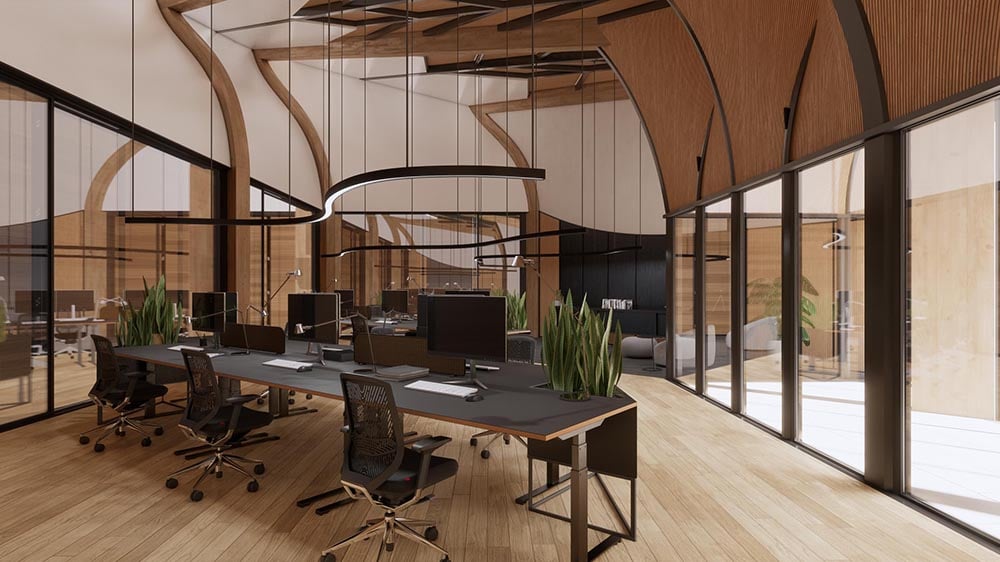
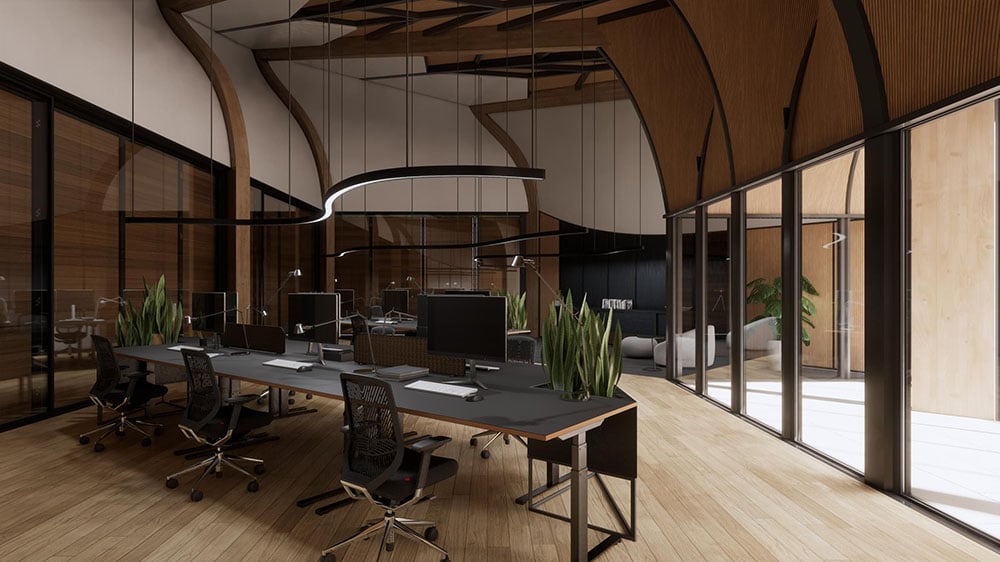
Enscape 3.4 on left, Enscape 3.5 on right
More light bounces will light up enclosed interior scenes in a realistic manner. Improvements are visible in exterior scenes as well, particularly for large shadowed surfaces. They will also appear more realistically lit, for example, areas of your project that are covered by a large roof or hallways that receive little direct sunlight.
This technical advancement aids you to create stunning visualizations with no extra effort or complex settings, because details of the shapes in the shadows will be easier to perceive.
While using the white mode, even people with an untrained eye for perspective will notice more elements in the scene and understand the true scale of objects and their position in relation to each other.
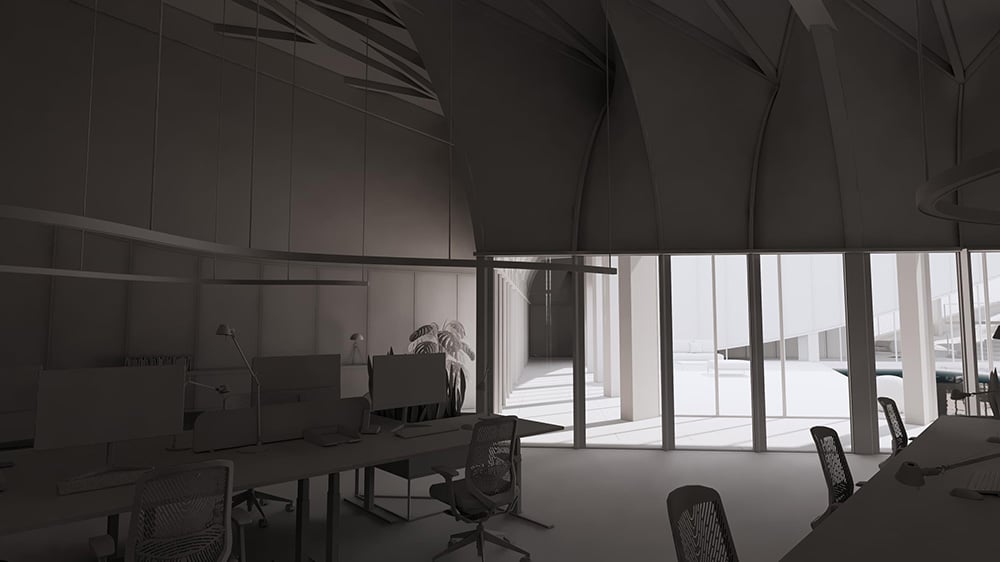
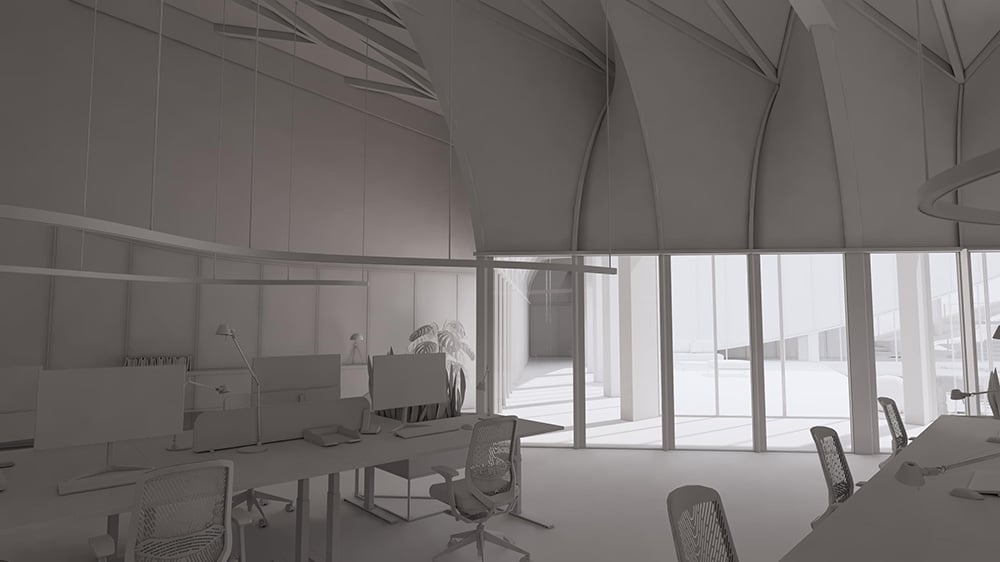
Enscape 3.4 on left, Enscape 3.5 on right
Black and white images are breathtaking with the sharper detail and reduced noise that multibounce GI brings to the stage.
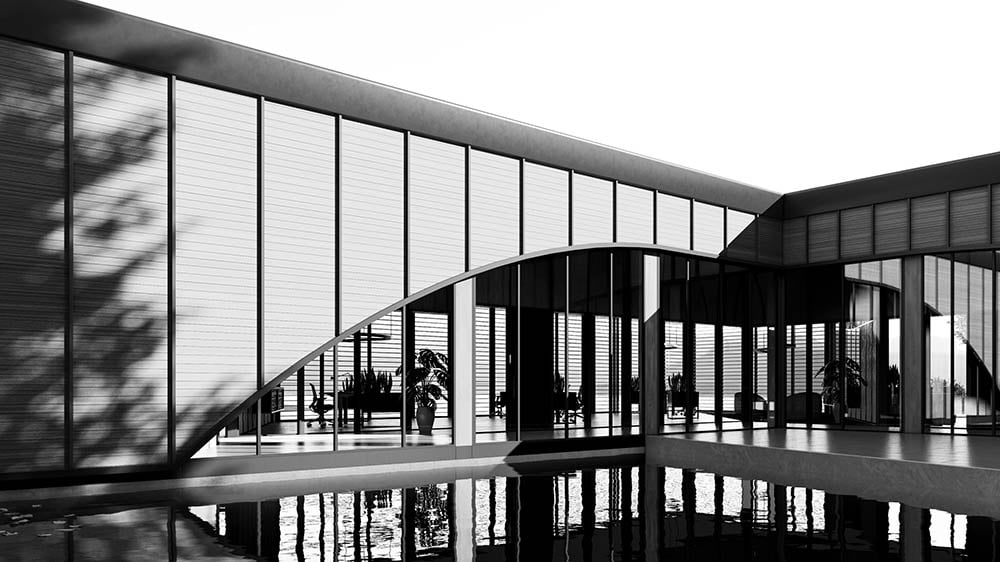
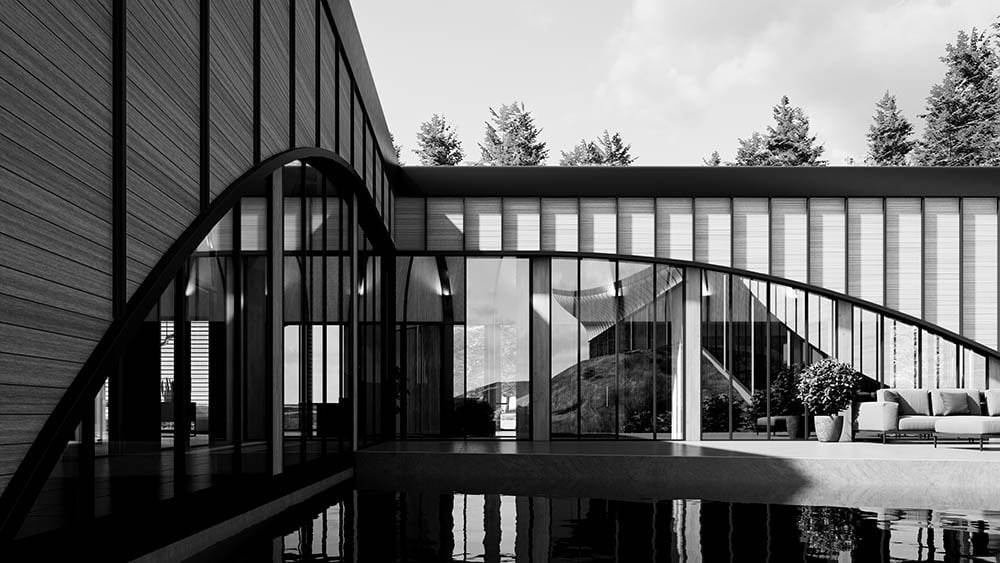
Achieving better indirect lighting of semi-transparent materials
In the past, semi-transparent materials, such as frosted or tinted glass, did not receive the proper global illumination, making them slightly darker than they should be.
Since they now receive indirect lighting, these materials pop up in all their splendor in Enscape 3.5, giving them a more grounded appearance in their surroundings. This improvement is particularly observable in indoor nighttime scenes.


Enscape 3.4 on left, Enscape 3.5 on right
Notice in the examples above how the fresnel reflection borrows the colors of the surroundings and also reveals the color tint of the glass.
All objects that have opacity levels of more than 0% (fully transparent) and less than 100% (fully opaque) benefit from this technical update.
If you are a fan of using glass decoration objects, semi-transparent partition walls, and furniture in your designs, you will surely enjoy this new look of glass!
Improved shading quality for reflections
With the Enscape 3.4 release, we added more detail to what was visible in mirror surfaces by updating the way Enscape calculates the geometry in reflections. Further improvements to the shading quality have been achieved with Enscape 3.5.
Surfaces in reflections now receive more realistic indirect illumination and don’t show inconsistencies between screen space and off-screen anymore. By screen space, we mean everything that is captured by the camera, and off-screen refers to the reflection of the elements that are located behind the camera but are still visible on the mirror surface.
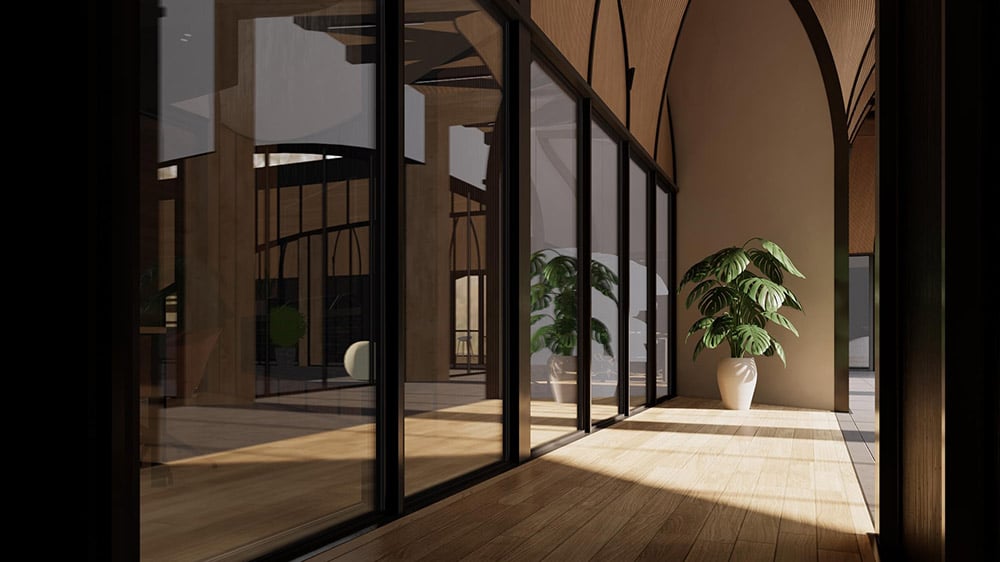

Enscape 3.4 on left, Enscape 3.5 on right
Improvements in the reflections are mostly visible in the interiors, where the multiple bounces of light are relevant. But some improvements are also noticeable in water surfaces when the camera points directly into the water and captures in view the reflection of something located behind.
Multibounce specular reflection
Specular reflections were enhanced to up to six bounces visible, making it easier to create the infinity mirror effect in areas where reflective surfaces are facing each other.
In comparison with the previous versions, which captured just one bounce, now it’s easy to visualize spaces with large mirror surfaces and create spectacular scenes.
While previously all materials appeared matte in glossy surfaces, now they render much more realistically based on their material roughness parameter, as can be seen in the comparison images below (notice the water-tap and reflective tiles).
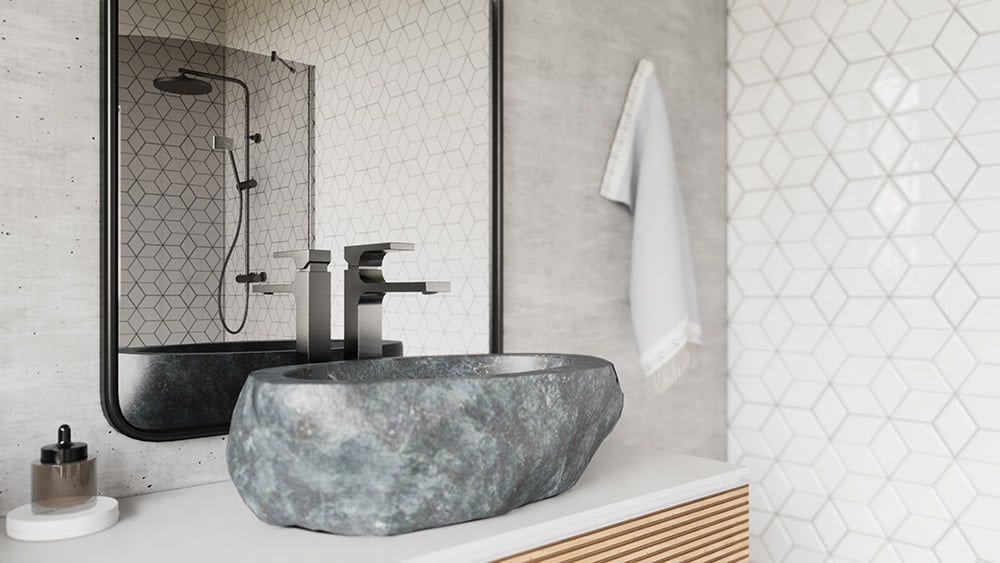
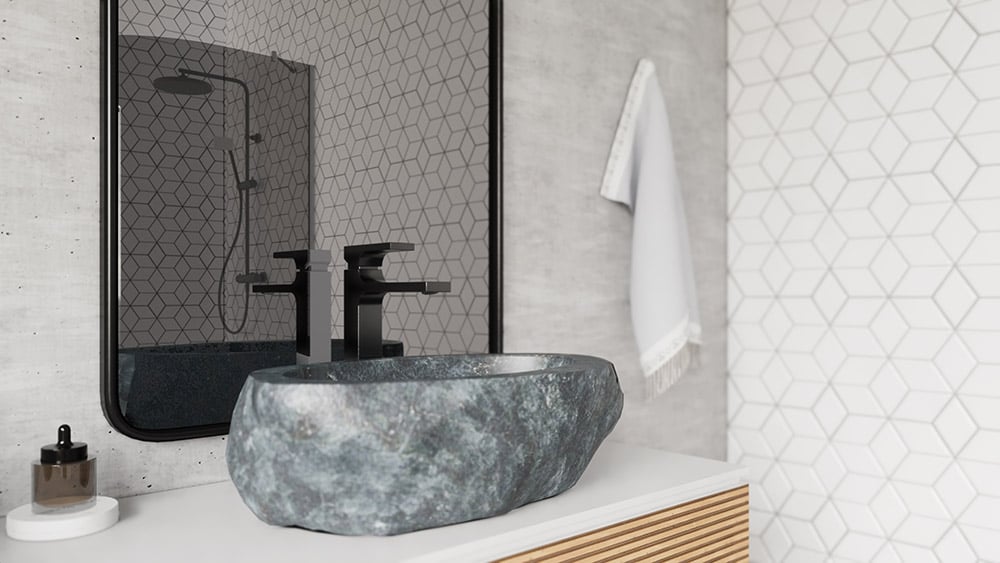
Accurate reflections in smaller spaces
Even though these enhanced reflections are not yet perceivable in real-time walkthroughs and multi-bounce reflections are currently supported for the Ultra quality setting (with hardware ray-tracing enabled), for still images and capturings only, we believe that this update makes a difference in the way you can stage narrow spaces that normally contain many mirrors.
On our Enscape Product Roadmap Portal, we constantly receive insights about the need to present small spaces with more lifelike reflections, especially since framing a view without capturing a mirror inside it can’t be avoided.
Now your renderings from entrance hallways, dressing rooms, or small kitchens and bathrooms will showcase more accurate reflections for glossy materials and objects so that your clients can focus on the real design features and not get lost in a funhouse of mirrors.


When using quality level Ultra and High, you might have already observed notable changes also for the noise reduction in the dark areas of reflective surfaces. Night and sunset scenes look spectacular in Enscape 3.5.
Faster and higher-quality output
The new global illumination solution allows you to generate higher-quality output faster than ever before. Now you can render using the High setting, plus enabled ray tracing in Enscape 3.5 to get better quality images, compared to when using the Ultra rendering setting from previous versions.
Further updates to rendering quality and the appearance of sun shadows are planned in the next releases as well. It’s a priority for us to move further away from the “playing a video game” feeling and, instead, to provide even more realism.
Future outlook
Some of these newly-released technical improvements from Enscape 3.5 emerged as a result of knowledge transfer between teams working on different Chaos products.
The successful collaboration between our teams started with the release of procedural clouds from Enscape to V-Ray 6 and through making 3D-scanned people assets in Enscape available in Chaos Cosmos. This collaboration will undoubtedly continue to positively influence Chaos product launches in 2023 and beyond as well.
You can now leverage the creative power of the +700 talented people we have in our organization and enjoy an enhanced and delightful design experience with all our products.
We are committed to the continuous development of Enscape’s rendering capacity as a short-term goal and dreaming big for the next few years. As Chief Product Officer, Kam Star, says below, "we are proud of being innovative and are committed to pushing the boundaries of what's possible in our industry even further". So watch this space!